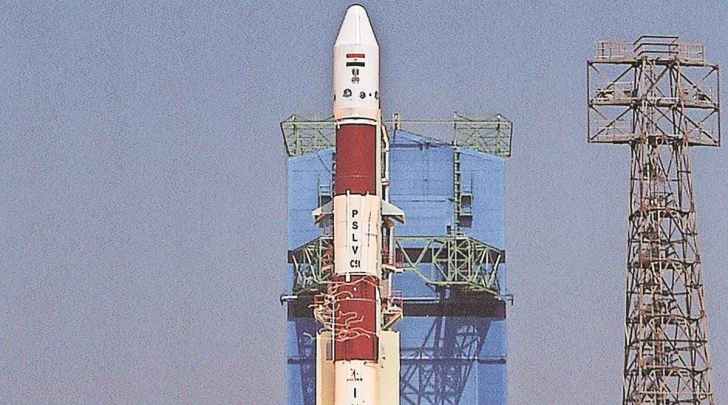Context
-
ISRO’s indigenous new launch rockets, called the Small Satellite Launch Vehicle (SSLV), will have its much-delayed, maiden development flight this April.
-
The ISRO chairman has mentioned the launch of an “SSLV-D1 Micro SAT in April 2022”
About Small Satellite Launch Vehicle (SSLV)
- The SSLV is intended to cater to a market for the launch of small satellites into low earth orbits which has emerged in recent years on account of the need for developing countries, private corporations, and universities for small satellites.
-
The launch of small satellites has until now been dependent on ‘piggy-back’ rides with big satellite launches on ISRO’s work-horse – the Polar Satellite Launch Vehicle which has had over 50 successful launches so far.
-
The launch of small satellites as a consequence has been dependent on the finalising of launch contracts for the larger satellites by ISRO.

Credit: IE - The SSLV can carry satellites weighing up to 500 kg to a low earth orbit while the tried and tested PSLV can launch satellites weighing in the range of 1000 kg.
- The SSLV is the smallest vehicle at 110-ton mass at ISRO.
- It will take only 72 hours to integrate, unlike the 70 days taken now for a launch vehicle.
- Only six people will be required to do the job, instead of 60 people.
- The entire job will be done in a very short time and the cost will be only around Rs 30 crore. It will be an on-demand vehicle.
Significance of SSLV
- The development and manufacture of the SSLV are expected to create greater synergy between the space sector and private Indian industries – a key aim of the space ministry. Indian industry has a consortium for the production of PSLV and should come together to produce the SSLV as well once it is tested, ISRO has stated in the past.
- Manufacturing and production of Small Satellite Launch Vehicle (SSLV) and Polar Satellite Launch Vehicle (PSLV) through technology transfer,” is one of the mandates of the newly-created ISRO commercial arm, New Space India Limited (NSIL).
- SSLV is perfectly suited for launching multiple microsatellites at a time and supports multiple orbital drop-offs.
Visit Abhiyan PEDIA (One of the Most Followed / Recommended) for UPSC Revisions: Click Here
IAS Abhiyan is now on Telegram: Click on the Below link to Join our Channels to stay Updated
IAS Abhiyan Official: Click Here to Join
For UPSC Mains Value Edition (Facts, Quotes, Best Practices, Case Studies): Click Here to Join
